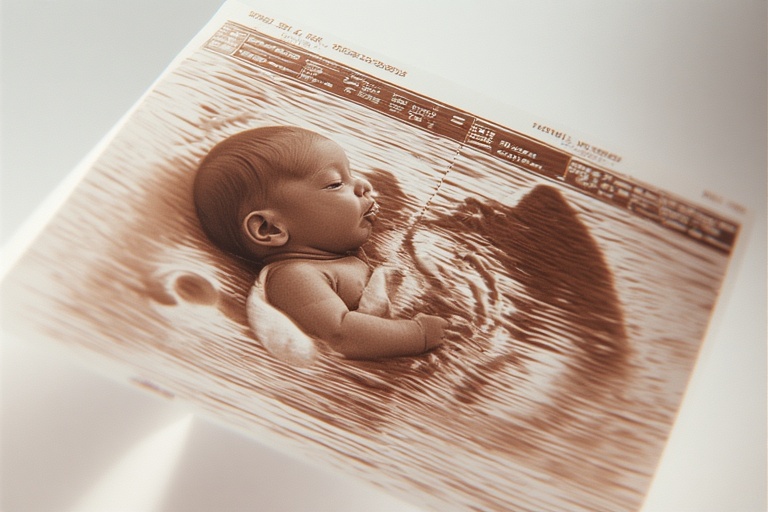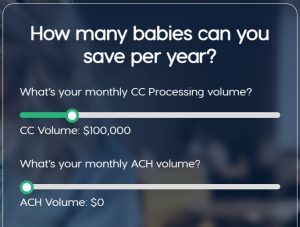When 18-year-old Kaylin Fiengo sent photos of her positive pregnancy tests to Donovan Faison in 2022, his response was chilling and immediate: “Abortion!!!” What followed became one of the most heart-wrenching examples of what happens when someone refuses to be forced to abort their child. On October 30, 2025, a Seminole County jury voted 11-1 to recommend the death penalty for Faison, who murdered Fiengo and their unborn son after she courageously refused to terminate her pregnancy.
The Fundamental Question: Who Has the Right to Force Death?

The case of Kaylin Fiengo and her unborn son forces us to confront an uncomfortable truth: society recognizes the violence of what Donovan Faison did as murder, yet similar violence against unborn children occurs legally every day in abortion facilities across America. The only difference is who applies the force and whether the mother consents to the death of her child.
A Young Mother’s Brave Stand Against Being Forced to Abort
Kaylin Fiengo was already a dedicated mother to her one-year-old son, Ace, when she discovered she was pregnant again. She graduated high school early as a young mother, with her cap reading “mommy did it”, demonstrating her commitment to both her education and her role as a parent. When faced with pressure to be forced to abort her second child, she refused—a decision that would ultimately cost her life.
According to prosecutors, Faison “erupted” when Fiengo texted him the positive pregnancy tests. He was angry and felt pressured because he was living with another woman who suspected him of cheating. The text messages recovered by investigators revealed a disturbing pattern: Faison wanted to force Fiengo to abort, and when she refused, he vowed to a friend, “On my brothers grave, I’m gonna crop her out”.
How Many Babies Can You Effortlessly Save This Year?
Take 30 Seconds to find out. Go to the Baby Saving Calculator at Pro Life Payments. Pro Life Payments is the for-profit arm of the pro-life movement. Pro-Life Payments is reducing abortion in America by turning customer financial transactions into pro-life funding. We give 15% of gross revenue to Pro-Life organizations. Payments is transitioning donation platforms, credit card processing and peer to peer payments into a funding engine for the pro-life community. Pro-Life Payments is providing customers with the alternative to the abortion-supporting financial institutions and payment processors they are supporting today.
The Ultimate Act of Violence: Forcing Death Upon the Defenseless
On November 11, 2022, Faison lured Fiengo to Coastline Park in Sanford, where he shot her execution-style in the head as she sat in her car. She was approximately three months pregnant at the time. Near her body, investigators found an ultrasound image of her unborn child—a haunting reminder of the innocent life that was also taken that night.
Prosecutor Stewart Stone described it perfectly when he told jurors: “This was an execution-style killing” and urged them to “consider the cold, calculated, premeditated nature of this killing”.
The Unborn Child: Completely Unable to Defend Itself
The parallel between what happened to Kaylin Fiengo and what happens in abortion is stark and undeniable. In both cases, brutal, unstoppable force is used against someone who cannot defend themselves. When Faison murdered Fiengo and her unborn child, he made the same calculation that occurs in every abortion: that the vulnerable, defenseless life can be eliminated through violence to serve the desires of someone more powerful.
Abortion: The Use of Brutal, Unstoppable Force
The methods used in abortion procedures reveal the brutal reality of what it means to force an unborn child to die. During a dilation and evacuation (D&E) procedure, which is commonly performed in the second trimester, the abortionist uses instruments to grasp portions of the unborn child and dismember them. Supreme Court Justice Anthony Kennedy described this process based on testimony from an abortionist: “The D&E procedure requires the abortionist to use instruments to grasp a portion (such as a foot or hand) of a developed and living fetus and drag the grasped portion out of the uterus into the vagina”.
Kennedy continued: “The fetus, in many cases, dies just as a human adult or child would: It bleeds to death as it is torn limb from limb”. One former abortionist who testified before Congress on abortion procedures stated that “there is no possibility of denial of an act of destruction by the operator. It is before one’s eyes. The sensations of dismemberment flow through the forceps like an electric current.”
This dismemberment is performed on a living fetus unless the abortion provider has induced fetal demise prior to initiating the evacuation procedure. The child being aborted has no ability to defend itself, no ability to cry out, no ability to escape. It is as if the abortionist is telling the child, “hold still” and let me kill you—except the child has no choice but to “hold still” because it is completely trapped and defenseless within the womb.
Christian Merchant Card Services
Pro Life Payments is the for-profit arm of the pro-life movement. Pro-Life Payments is reducing abortion in America by turning customer financial transactions into pro-life funding. We give 15% of gross revenue to Pro-Life organizations. Payments is transitioning donation platforms, credit card processing and peer to peer payments into a funding engine for the pro-life community. Pro-Life Payments is providing customers with the alternative to the abortion-supporting financial institutions and payment processors they are supporting today.
The Correlation: Force Against the Defenseless
Both the murder of Kaylin Fiengo and her unborn child, and the act of abortion itself, share a common thread: the application of overwhelming, unstoppable force against those who cannot defend themselves. Kaylin Fiengo was three months pregnant when she was killed—meaning her unborn child was in the same developmental stage as countless babies who are legally aborted every day in America.
Her unborn son had no ability to defend himself from the bullet that killed his mother and ended his life. He had no choice in the matter. He was utterly dependent on his mother for protection, and when violence came, he was helpless to resist. This is the exact position of every unborn child facing abortion: completely vulnerable, unable to defend, unable to flee, unable to fight back against the force that will end their life.
One aggravating factor presented to the jury was that Faison killed a child younger than 12 while committing another capital felony. Florida law recognized the unborn child as a victim—a human being whose life had value and whose death constituted murder. Yet in abortion facilities across America, unborn children at the same developmental stage are killed daily, and it is called a “choice” rather than a crime.
Kaylin’s Legacy: Choosing Life Over Pressure
Kaylin Fiengo’s family remembered her decision to refuse to be forced to abort as an act of bravery. Her aunt, Tatiana Fiengo, said “What she did was brave regardless, right? She chose her child at the end of the day”. Her mother, Sarah Schweickert, described Kaylin as “a very vivacious, loving, funny, and caring young woman. Who loved her son immensely”.
Sanford Police Chief Cecil Smith stated: “This beautiful, young woman and mother, was taken from this world far too soon, and in a horrific way. We hope that today’s arrest brings the slightest amount of peace for Kaylin’s family and the young son she left behind. It doesn’t bring her back, but at least she will have the justice she deserves.”
The Growing Crisis: Women Pressured and Forced to Abort
Kaylin Fiengo’s case is tragically not unique. Homicide is the leading cause of death among pregnant women in the United States, and many of these homicides are linked to domestic violence situations.
Justice Served, But Questions Remain
On October 27, 2025, after just two hours of deliberation, the jury convicted Faison of first-degree murder with a firearm, killing an unborn child, and burglary with a firearm. During closing arguments, prosecutor Domenick Leo presented the text message evidence and told jurors: “He said he was going to do it, then he did it. The police got the right guy”.
The jury voted 11-1 to recommend the death penalty on October 30, 2025. Circuit Judge Donna Goerner will make the final decision on Faison’s sentence after a hearing scheduled for December 5, 2025.
Assistant State Attorney Domenick Leo said following the jury’s recommendation: “The death penalty should be reserved as the ultimate punishment for the most atrocious conduct. A father who executed the mother of his child and his unborn child – in a manner that demonstrated both detailed planning and deceit – falls squarely within the type of conduct that justifies its application.”
The Fundamental Question: Who Has the Right to Force Death?
The case of Kaylin Fiengo and her unborn son forces us to confront an uncomfortable truth: society recognizes the violence of what Donovan Faison did as murder, yet similar violence against unborn children occurs legally every day in abortion facilities across America. The only difference is who applies the force and whether the mother consents to the death of her child.
Unborn children are the most vulnerable members of society and the most in need of our protection. They are innocent victims who must rely completely on others for their survival. When anyone—whether an abusive partner like Donovan Faison or an abortionist in a clinic—uses force to end the life of an unborn child, the result is the same: a helpless human being who cannot defend themselves is killed through overwhelming violence.
The parallel is clear and undeniable. In abortion, as in the murder of Kaylin Fiengo’s unborn son, unstoppable force is applied against a completely defenseless victim. The unborn child cannot fight back, cannot escape, cannot cry out for help. It is as if someone holds them down and says “hold still” while ending their life—except the child has no choice. They are utterly powerless to resist.
Kaylin Fiengo refused to be forced to abort her child, and that refusal cost her everything. But in her final act of defiance against the violence demanded of her, she showed the world what it truly means to protect the vulnerable and defenseless. She understood what every unborn child deserves to know: that their life has value, that they are worth protecting, and that no one should have the power to force their death simply because they are small, helpless, and unable to defend themselves.
Her legacy lives on in her son Ace, who will grow up knowing that his mother loved him enough to graduate high school early with “mommy did it” on her cap, and that his mother and sibling died because she refused to surrender to the brutality of forced abortion. That is a legacy of love, courage, and the fundamental recognition that every human life—no matter how small or defenseless—deserves protection from those who would use unstoppable force to end it.
If you or someone you know is experiencing reproductive coercion or domestic violence, please contact the National Domestic Violence Hotline at 1-800-799-SAFE (7233) for confidential support 24/7/365.

